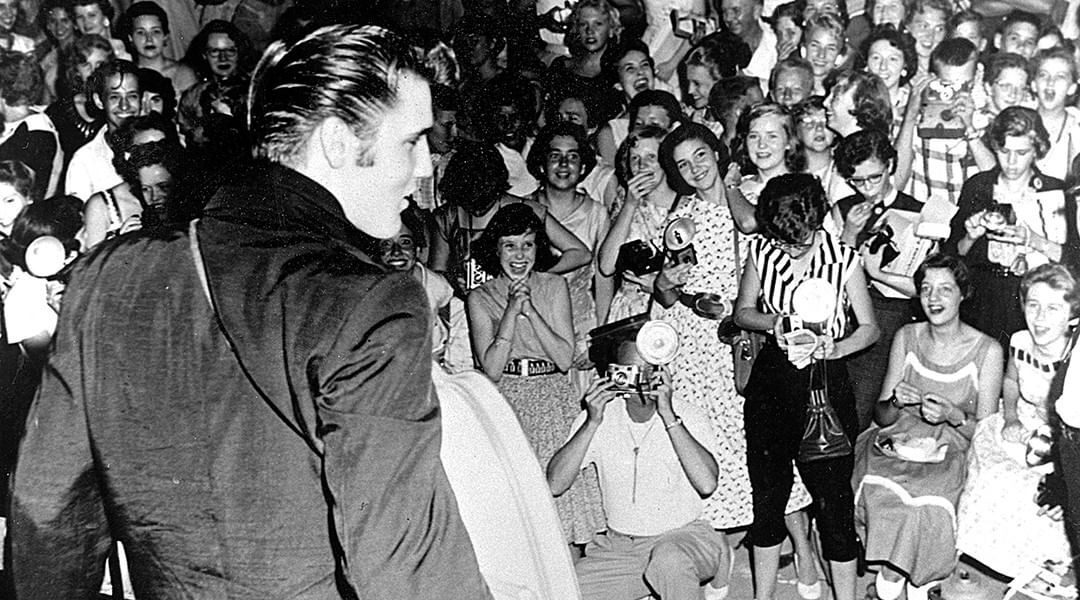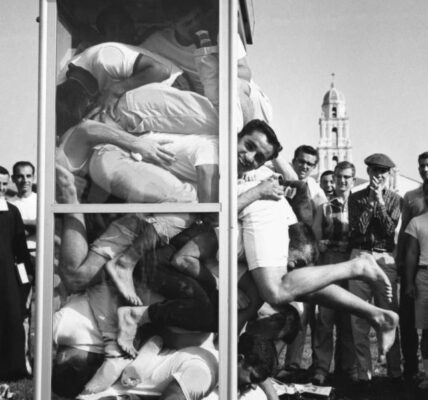“Santa Lucia,” a classic Neapolitan song, became part of Elvis Presley’s repertoire when he recorded it for his 1964 film Viva Las Vegas. This song stands out as an elegant and simple melody that Elvis delivered with his trademark charm, offering listeners a brief but memorable glimpse of his versatility as an artist. Though it is far from his usual rock ‘n’ roll hits, “Santa Lucia” is a testament to Elvis’s ability to embrace different musical styles, particularly ones rooted in rich cultural traditions.

Originally composed in the 19th century by Teodoro Cottrau, “Santa Lucia” is an ode to the beautiful seaside town of Naples. It was written as a serenade, expressing admiration for the peaceful scene along the coast and the gentle waves of the sea. When Elvis took on this song, he didn’t stray far from its origins, keeping the melody and lyrics intact, singing it mostly in Italian, maintaining its serene and romantic feel. It was a rare moment where the King of Rock ‘n’ Roll paid homage to a European traditional melody, showing his appreciation for world music.

Musically, “Santa Lucia” in Elvis’s version is a stripped-down piece, focusing on his vocal delivery with minimal instrumentation. The arrangement highlights Elvis’s voice, giving him room to demonstrate the softer, more operatic quality of his vocals, which was not often showcased in his other more energetic performances. His gentle and smooth rendition complements the song’s peaceful atmosphere, creating an aura of calm and nostalgia.

While “Santa Lucia” may not have reached the same level of fame as Elvis’s other hits, it is cherished for its elegance and for highlighting a different aspect of his musical talent. The song fits perfectly within the context of Viva Las Vegas, providing a change of pace amidst the more upbeat numbers in the film. It serves as a reminder that Elvis was not only a rock star but also a true vocalist with the ability to handle a variety of musical genres.

In conclusion, “Santa Lucia” is a beautiful and understated performance that adds a unique flavor to Elvis Presley’s vast discography. His rendition of this Neapolitan classic demonstrates his willingness to explore different musical territories, making him not just a rock ‘n’ roll icon, but a versatile artist with a deep appreciation for diverse styles and traditions.
Elvis Aaron Presley, often referred to as the “King of Rock and Roll,” was born on January 8, 1935, in Tupelo, Mississippi, USA. He rose to prominence in the mid-1950s, becoming one of the most iconic and influential figures in the history of popular music. Presley’s musical journey began at an early age when he started singing in church and listening to various genres of music, including gospel, blues, and country. In 1954, he signed a recording contract with Sun Records, where he began his career blending elements of rockabilly, rhythm and blues, and country music. His breakthrough came with the release of his first single, “That’s All Right,” followed by a string of hits such as “Heartbreak Hotel,” “Hound Dog,” and “Jailhouse Rock.” With his charismatic stage presence, distinctive voice, and provocative dance moves, Presley captured the hearts of audiences worldwide, revolutionizing the music industry and popular culture. Presley’s impact extended beyond music; he also found success as an actor, starring in a series of films throughout the 1960s. Despite his commercial success, he faced criticism from some quarters for his crossover into mainstream entertainment and the perceived dilution of his musical authenticity. Throughout his career, Presley struggled with the pressures of fame, leading to personal challenges, including substance abuse and health issues. Despite these obstacles, he remained a beloved figure, revered for his contributions to music and his enduring legacy. Tragically, Elvis Presley passed away on August 16, 1977, at the age of 42, leaving behind a legacy that continues to resonate with generations of fans. He was posthumously inducted into the Rock and Roll Hall of Fame, and his music remains a timeless testament to his enduring talent and cultural impact.


